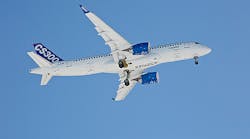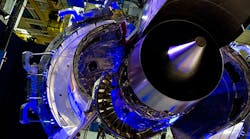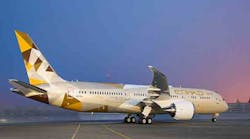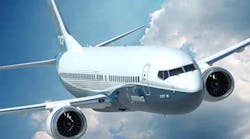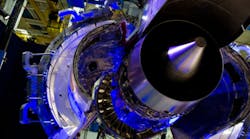Bombardier Commercial Aircraft conducted the maiden flight of its new twin-engine jet, the CS300, a new entry in the crowded market of narrow-body aircraft that predominate domestic and medium-range routes. It’s the second variant in Bombardier’s new CSeries.
“It was a thrill to see the first CS300 aircraft take to the skies for the first time and I heartily congratulate our teams for this achievement,” stated BCA president Mike Arcamone. “We continue to see increased interest from all over the world and as our performance targets are validated, we expect the enthusiasm for the CSeries family of aircraft to grow even more.”
The CS300, with 135 seats, and the smaller CS100, of which five test models are in service, comprise what the OEM called “an all-new family of single-aisle mainline jets specifically designed for the 100- to 149-seat market segment.”
Bombardier reported it has orders and commitments for 563 CSeries aircraft, including 243 firm orders. The company has indicated the CS100 will make its commercial debut later this year.
That single-aisle market segment is served mainly by the Boeing 737 series and Airbus A320 series, both of which will be updated with redesigned models in the coming two years. Bombardier’s CSeries will compete with those jets as well as the Comac C919 and Embraer 190 series aircraft.
The OEM stated the CSeries aircraft offer “the best seat-mile cost in its category,” making it attractive for short-haul as well as transcontinental routes.
The CSeries will be built at Bombardier’s assembly operations at Mirabel Airport, Montreal. Among the major suppliers are Pratt & Whitney, which contributes its PW1500G geared-turbofan engines; Shenyang Aircraft (fuselage); Alenia Aeronautica (composite horizontal and vertical stabilizers); Fokker Elmo (wiring, interconnection systems); C&D Zodiac (interiors); Parker Hannifin (flight control, fuel and hydraulics systems); Liebherr-Aerospace (air management system); Goodrich (flap and slat actuation systems and engine nacelles); and Rockwell Collins (avionics.)
Bombardier said the CS300 flew for nearly four hours on February 27, reaching an altitude of 41,000 feet and a top speed of 255 knots (470 km/h.)
“Our CSeries aircraft program is progressing well, with results from testing as expected or better. The CS300 airliner will now join the five CS100 aircraft flight test vehicles that have amassed more than 1,000 flight test hours to date,” according to Rob Dewar, vice president, CSeries Program. “We are confident the CS100 aircraft will be certified in the second half of 2015, followed closely by entry-into-service. The CS300 airliner is expected to follow about six months later.”
